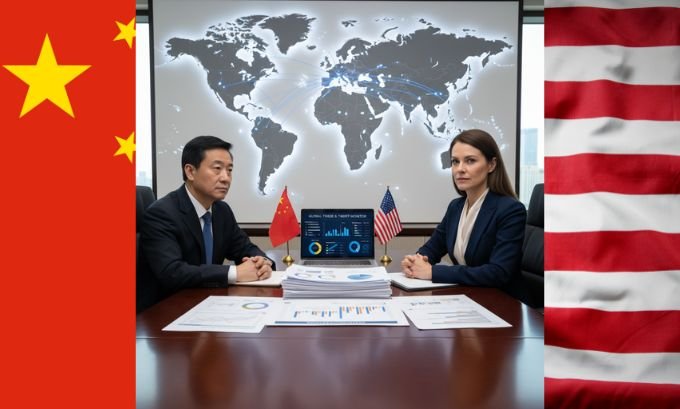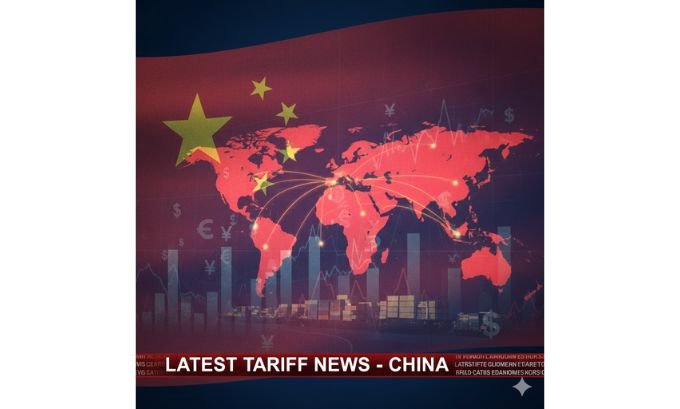Introduction
The latest tariff news China update centers on U.S. President Donald Trump’s call for the European Union (EU) to impose 100% tariffs on China and India. The move is tied to efforts to weaken Russia’s oil revenues, which continue to fund the war in Ukraine. At the same time, the U.S. Supreme Court is fast-tracking a case that could decide whether Trump’s use of the International Emergency Economic Powers Act (IEEPA) to. Impose tariffs is constitutional.
This article breaks down the key developments, the geopolitical stakes, and what these tariffs mean for global trade, using a structured and semantic SEO-friendly approach
Table of Contents
Trump Tariffs Live Updates: What Happened?
Donald Trump directly urged the EU to align with his administration by imposing 100% tariffs on China and India, two of the largest buyers of Russian oil. The request came during Washington, D.C. sanctions coordination talks with EU envoy David O’Sullivan.
The United States also confirmed it would “mirror” any tariffs imposed by the EU, signaling a coordinated transatlantic pressure campaign against Vladimir Putin’s government.
Why Target China and India?
China and India are central to the story because both countries have continued buying large quantities of Russian oil since the Ukraine war began. By placing tariffs on their exports, the U.S. and EU aim to discourage purchases that indirectly fund Russia’s war machine.
Key Points:
- China is Russia’s largest oil customer.
- India has increased imports of discounted Russian oil since 2022.
- Russia relies heavily on these revenues to sustain its war.

India-US Trade Talks Amid Tariff Threats
While tariffs are on the table, Trump struck a softer tone toward India, announcing renewed U.S.–India trade negotiations. Prime Minister Narendra Modi responded positively, saying trade talks could unlock the “limitless potential” of the bilateral partnership.
This dual approach—threats of tariffs but promises of trade—illustrates Washington’s delicate balancing act with New Delhi.
EU’s Dilemma: Sanctions vs Tariffs
The European Union traditionally relies on sanctions rather than tariffs to punish Russia. Shifting to 100% tariffs would represent a major departure from its policy.
Challenges for the EU:
- Brussels fears backlash due to extensive trade ties with India and China.
- EU states remain divided, especially as some still depend on Russian gas.
- Secondary sanctions on third countries are also being debated but remain controversial.
Legal Battle in the United States: IEEPA and the Supreme Court
A parallel development is unfolding in the U.S. Supreme Court, which has agreed to fast-track a case challenging Trump’s tariffs.
What’s at Stake:
- Trump used the IEEPA (1977 law) to justify tariffs.
- Lower courts, including the Court of International Trade and the Appeals Court, ruled he may have overstepped his authority.
- The Supreme Court will hear arguments in November 2025.
Economic Impact:
- Treasury Secretary Scott Bessent warned the U.S. may need to refund up to 50% of tariff revenue if the court strikes them down.
- Trump has hinted at unwinding trade deals with the EU, Japan, and South Korea if his tariff powers are curtailed.
Strengths of Trump’s Strategy
- Clear leverage: Tariffs pressure Russia indirectly by targeting its oil customers.
- EU alignment: A unified Western tariff regime could hit Moscow harder.
- Negotiation tool: Tariffs double as bargaining chips in talks with India.
Areas for Concern
- Legal risks: The Supreme Court ruling could undermine tariff policy.
- Economic blowback: Higher tariffs may trigger inflation or retaliatory measures.
- Diplomatic strain: EU may resist measures that jeopardize trade ties.

Comparison Table: Tariffs vs Sanctions
| Policy Tool | Tariffs (Trump Proposal) | Sanctions (EU Approach) |
| Target | Imports from India & China | Direct restrictions on Russian trade |
| Goal | Cut demand for Russian oil | Limit Russia’s access to global markets |
| Risks | Trade war, inflation, WTO disputes | Sanctions evasion, limited enforcement |
| EU Position | Divided | Preferred approach so far |
FAQ Section
Q1: What is the latest tariff news on China?
Donald Trump has urged the EU to impose 100% tariffs on China for continuing to buy Russian oil, as part of a coordinated Western strategy to weaken Moscow.
Q2: Why is India also being targeted?
India has significantly increased Russian oil imports since 2022. Tariffs aim to discourage this trade, but the U.S. is also negotiating trade deals with India.
Q3: What law allows Trump to impose tariffs?
Trump cites the International Emergency Economic Powers Act (IEEPA, 1977), though courts have questioned whether it gives him such broad authority.
Q4: What role does the Supreme Court play in tariffs?
The Supreme Court will decide in late 2025 whether Trump’s use of IEEPA for tariffs is constitutional, a ruling that could reshape U.S. trade policy.
Q5: How could tariffs affect the EU?
If the EU joins the U.S. in imposing tariffs, it risks damaging trade with China and India while intensifying pressure on Russia.
Q6: What are reciprocal tariffs?
Trump’s reciprocal tariffs are country-specific duties ranging from 10% to 50%. The proposed 100% tariffs represent an escalation.
Q7: Could tariffs backfire on the U.S.?
Yes. They could raise consumer prices, strain alliances, and lead to retaliatory measures by trading partners.
Conclusion
The latest tariff news China highlights a pivotal moment in global trade and geopolitics. Trump’s push for 100% tariffs on China and India places immense pressure on the EU, while the U.S. Supreme Court’s ruling on tariff powers could redefine the limits of presidential authority. For now, the outcome will depend on whether Washington and Brussels can align their strategies, and how India and China respond to this mounting pressure.
References:
- Financial Times, September 2025 – Trump’s tariff proposals.
- U.S. Supreme Court docket – Tariff authority review, 2025.
- EU Council Statements – Sanctions vs tariff policy discussions.
- U.S. Treasury Department briefings – Revenue risks from tariff refunds.

